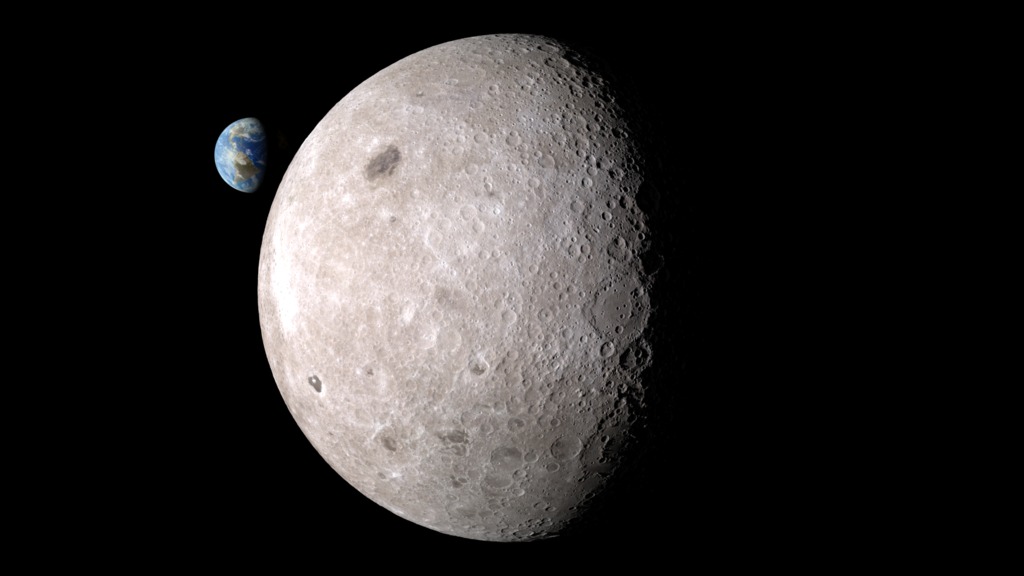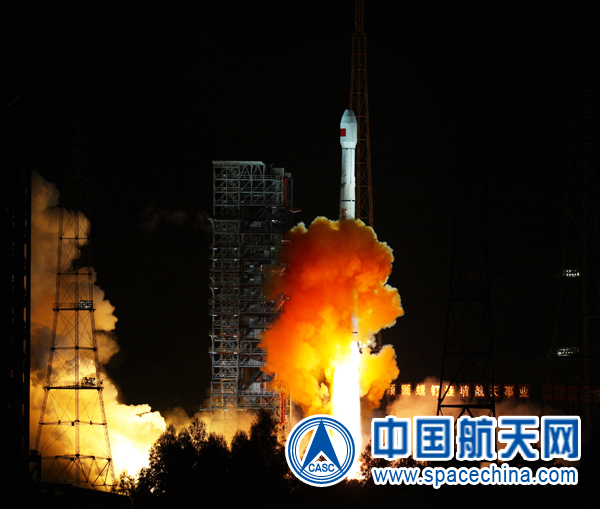An out-of-control piece of rocket space junk is crashing into the moon: Here's what to know
It's an interesting story, with many twists and turns.

A rocket stage will slam into the moon on Friday (March 4), amid a dispute about which country launched it and discussions on the complexity of tracing human-made objects in deep space.
What's known for sure is that the rocket stage will impact the far side of the moon, out of range of ground telescopes and likely also away from the immediate view of NASA's Lunar Reconnaissance Orbiter. The unintentional crash will occur at 7:25 a.m. EST (1225 GMT) on Friday, experts say.
LRO will seek out the crater after the event, a missions spokesperson told Space.com last month; Scientific American suggests the impact will occur somewhat near the 354-mile-wide (570 kilometers) Hertzsprung Crater.
The rocket body's road to the moon has been a tricky story to trace, however. Sources have variously pointed to a SpaceX Falcon 9 rocket, a Chinese rocket or perhaps some other vehicle.
The discussions have framed the difficulty of looking for small objects near the moon's orbit, which has larger implications for tracking missions and debris as NASA's Artemis program, and the United States Space Force, both target cislunar space for missions later in the 2020s and beyond.
Lunar mystery: Who launched the rocket that will slam into the moon?
More: The greatest moon crashes of all time
If you spot the rocket stage in a telescope before it hits the moon, let us know! Send images and comments in to spacephotos@space.com.
A few months ago, astronomer Bill Gray (who runs the Pluto Project program that tracks faraway space objects) originally identified the rogue object as the upper stage of the SpaceX Falcon 9 rocket that launched the Deep Space Climate Observatory (DSCOVR) satellite in February 2015. The finding generated international news and attention.
Get the Space.com Newsletter
Breaking space news, the latest updates on rocket launches, skywatching events and more!
A deeper analysis, however, revealed that a Falcon 9 is not the likely culprit. The orbit does not match that of the DSCOVR Falcon 9, Gray said in a correction to his initial work. It more closely resembles the orbit of the upper stage of the rocket that launched China's Chang'e 5-T1 mission in 2014, he noted. Helpers with Gray's reanalysis who supported this new theory include Jonathan McDowell, a Harvard-Smithsonian Center for Astrophysics astronomer who commonly tracks space objects.
Chang'e 5-T1 was a technology demonstrator for the Chang'e 5 mission, which brought a sample of the moon back to Earth in December 2020.
Several more independent observations have suggested that the moon-bound booster is from Chang'e 5-T1. But China has denied that the mission is responsible.
Video: Rocket stage to slam into moon, seen by Virtual Telescope Project

"According to China's monitoring, the upper stage of the rocket related to the ... mission entered into Earth's atmosphere and completely burned up," foreign ministry spokesperson Wang Wenbin said Feb. 21 on a Chinese government website, as reported by SpaceNews.
China has come under fire in recent years for spaceflight practices that some experts say have been irresponsible. In 2021, for example, the 23-ton core stage of a Chinese Long March 5B booster crashed uncontrolled into the sea shortly after launch. (Generally, such large pieces of hardware are brought down in a controlled fashion for safety reasons.) Chinese officials, likely understanding that context, have stressed in the moon-crash discussion that the nation is very careful about how it disposes of all rocket stages shortly after launch.
China's assertion about the Chang'e 5-T1 booster was initially backed up by tracking data from the U.S. Space Force's 18th Space Control Squadron (18 SPCS), which suggested that the Chinese stage reentered the atmosphere in 2015, according to SpaceNews. Gray, however, has said that the Space Force's data was likely an extrapolation of a presumed reentry rather than confirmation of an actual one. That seems to have been the case, for the 18 SPCS recently confirmed to SpaceNews that the Chang'e 5-T1 stage did not deorbit after all.
The dispute remains unresolved. The booster moon crash will pose no threat to any infrastructure, given that it's occurring on the little-explored lunar far side. Scientific American, however, notes that any future bases on the moon's surface will need to keep a careful eye out for space debris that could be heading their way.
Follow Elizabeth Howell on Twitter @howellspace. Follow us on Twitter @Spacedotcom or on Facebook.
Join our Space Forums to keep talking space on the latest missions, night sky and more! And if you have a news tip, correction or comment, let us know at: community@space.com.

Elizabeth Howell (she/her), Ph.D., was a staff writer in the spaceflight channel between 2022 and 2024 specializing in Canadian space news. She was contributing writer for Space.com for 10 years from 2012 to 2024. Elizabeth's reporting includes multiple exclusives with the White House, leading world coverage about a lost-and-found space tomato on the International Space Station, witnessing five human spaceflight launches on two continents, flying parabolic, working inside a spacesuit, and participating in a simulated Mars mission. Her latest book, "Why Am I Taller?" (ECW Press, 2022) is co-written with astronaut Dave Williams.









